For Ecommerce businesses there is one more thing to SEO than regular websites. Ecommerce businesses are depending on selling products online, hence SEO on product pages plays a rather crucial role and if you are not paying attention to your product pages you are missing out on revenue.
Having awesome product pages are important for webshops. After all, this is where you get people to buy your products. You want to make sure that your product pages are well optimized for a smooth user experience but also for SEO.
Product page SEO is the real art of commercial story telling and this is where you can really stand out and advance your retail.
In this post I’ll take you through the way to do Ecommerce SEO on product pages and also touch the don’ts.
So, let’s get started.
Product page SEO can be tricky
Even though search engines look at individual pages as individuals they also pay attention to the rest of the website. Your pages affects each other in good and bad, hence you can’t just focus on your product pages only.
You need to optimize you entire webshop including products, categories, frontpage and guides. You should optimize your product pages but without losing track of the bigger picture.
As that wasn’t enough the most tricky part by doing SEO on product pages is that they will often compete with you category pages keywords – which we don’t want them to. It’s very easy to end up being caught in keyword cannibalization.
Having an Ecommerce shop often means that you have a medium/big website which makes you unable to handle every single issue on all pages. And you are not supposed to either.
Focus on the products that drive traffic and sales and squeeze them. Often, 80% of Ecommerce revenue comes from 20% of the products and categories. Focus on them and make sure to utilize the full potential from them first.
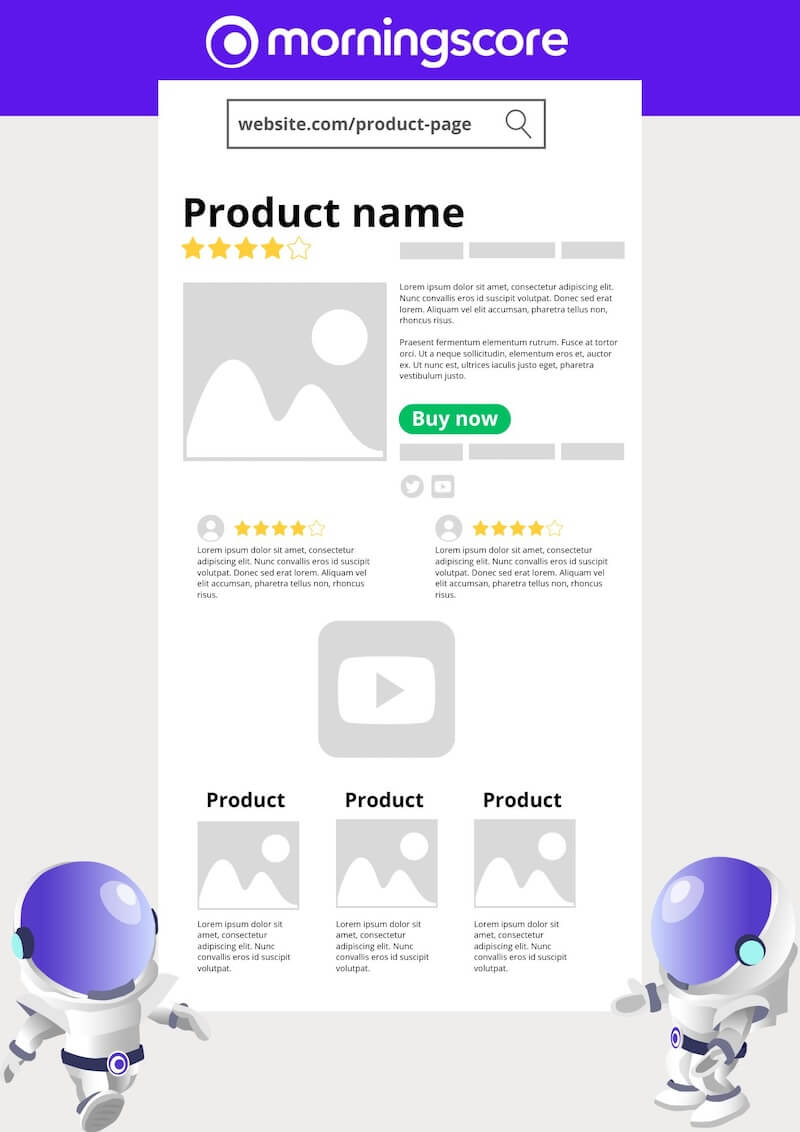
Create clear and descriptive URLs
Starting from the beginning with the URLs.
An optimized URL will help users decode what the page is about and what to expect by entering it if you have created a proper, meaningful URL. This also comes in handy for search engines that reads the same thing and compare the URL to the content to decide if it relate to the onpage content.
A proper URL for a product page is structured, easy to understand, contains the keyword and is as short as possible without blurring what the page is actually about.
Simple Ecommerce URL structure example: https://yourdomain.com/category/product-name/
Big Ecommerce URL structure example: https://yourdomain.com/women/category/under-category/product-name/
Check if you have non SEO-friendly URLs on your product pages below.
Include breadcrumbs
As an Ecommerce owner you should use breadcrumbs for product pages because they give a better user experience, improving site structure, and boost SEO performance.
Breadcrumbs gives a clear navigational path, making it easy for visitors to backtrack to category-level, reducing users getting lost and encouraging them to see more. The navigation helps organize extensive product categories, making sure products are easy to find by users as well as search engines.
From an SEO perspective, breadcrumbs often include relevant keywords, improving the visibility of product pages in search results and adding context and establishing hierarchy.
They also add additional internal links, distributing page authority and improves overall SEO. Moreover, breadcrumbs reduce bounce rates by allowing users to navigate back to category-level without disturbance.
Match product names with titles and H1
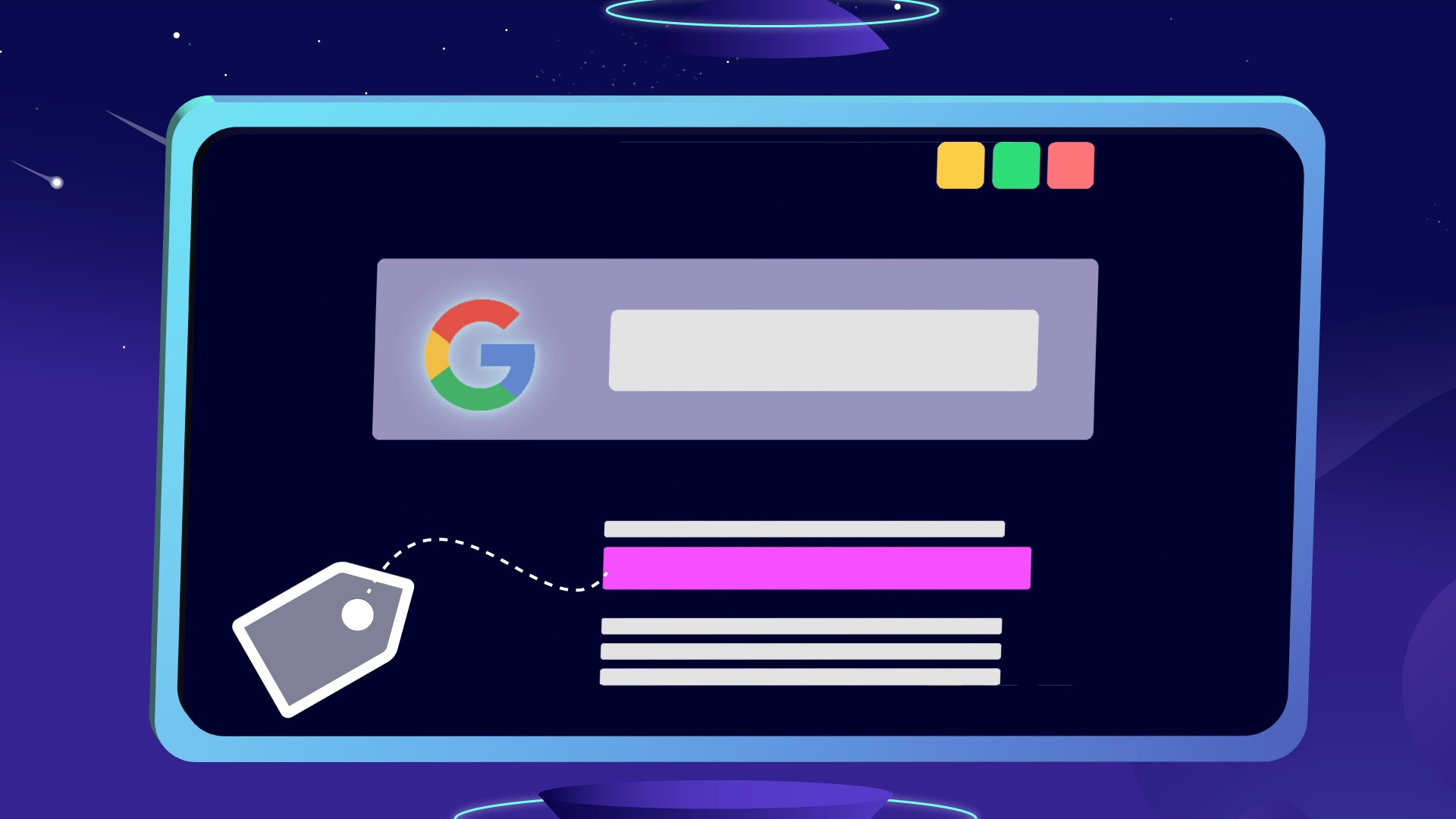
It’s important to make sure to align your keywords with the rest of your website – especially the category pages to prevent internal competition.
On product pages you should focus on pulling traffic from users searching for the exact product that you have in store and let your category pages pull the traffic from users that are not as long in the buying process that they know what exact product they need yet.
Target your product pages for the product name and use the product name in the URL, title, meta description, H1, etc.
Create universal templates for your product pages to automatically add the product name to the H1, title and fields for other important product specifications as SKUs, measurements, size guides, etc.
Be smart and match the users search and intent.
For example if you sell an LG TV with the name “OLED21A34BE OLED 55″ Smart Ultra HD OLED” and add “TV” at the end because this is what a user is actually looking for – a television.
Add relevant and helpful content and product attributes
Take full advantage of the possibilities when it comes to additional helpful content and attributes – not only for SEO but also for conversions.
Adding cool features and actual helpful content will make your product pages link magnets as people will talk about you, link to you for examples, etc and increase your authority.
You can play with a lot of cool features, animation and more to stand out and offer an exceptional user experience. Let’s look at some examples that is really cool to showcase for different online stores:
Calculators: Depending on your product you can create useful calculators. Are you selling food supplements you can create a calculator for calculating how much the user needs a day. Depending on energy need, daily activity, daily food intake etc how much of this special protein powder do I need? That would be pretty cool.
Augmented reality (AR): More and more companies are starting to use AR on their product pages and you should too. IKEA uses AR to let users virtually place the furniture in their own home, webshops selling sunglasses let you virtually try the glasses on while you are comfortable sitting in your couch and jewelry webshops let you try jewelries virtually from home. Example below from sunglasshut.com with “try them on” feature to see yourself wearing the sunglasses.

Size/fitting assistant: Do you sell clothes online? Then you might struggle with product returns. How about implementing a fitting assistant? More and more online clothing stores offers size and fitting assistants based on customer added data about measurements, previous orders compared to the actual fitting and forms of clothing. That’s pretty cool to know that a certain par if jeans won’t fit me that well no matter the size because of the way my body is build compared to the fitting of the jeans.
Environmental impact: Do your customers think about sustainability and environmental impact? If so, you might want to ad calculations of the environmental impact of your products (at least if that’s one of your USP’s – if not, it can have the opposite effect if your products are black as coal).
It doesn’t always have to be that complicated. Often it’s about the small things as for example recipe sites having a usable feature letting me, with a click on a button, put it on recipe-mode so my phone doesn’t lock while I’m cooking.
Another example of actual helpful content is makeup products. If the user is sitting at home without any option to test colors on their skin it’s crucial to help them out. Describe all variants, skin tones and other important information a user would need to know to help them pick the right one for their skin tone.
Optimize product images
Before we talk about optimizations of the images we need to address the images themself.
Images on your product pages needs to be absolutely high quality. Besides, you need to showcase your product in action and not just what seems to be a standard image of the product.
Say, you sell outdoor boots. Showcase the product with a normal product-shot but don’t stop there. Show the boots on real people in the actual environment in the woods, in the mountains or whatever they are a good fit for. Image below from product at blundstone.com.
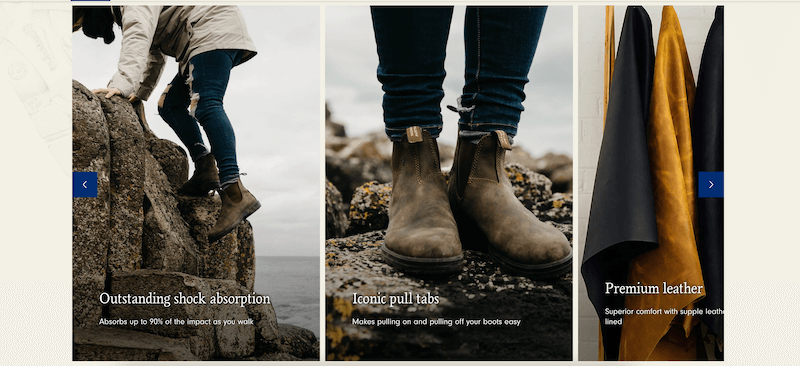
You want to create an imaginary image in the visitors head of how exiting their trip could be with their friends in the mountains with this new gear.
Gear up your model and get out there and see more interactions, more time spent on site and most important more conversions.
Time to optimize your high quality images.
Best practice for image optimization for Ecommerce:
- Include the product name in the image file-name
- Use the right format. WebP is worth to mention but you can also use JPG
- Show the image in the right size by saving the image in the size it is meant to be on the site (pixels)
- Compress image file size using tinypng.com to prevent slow page load
- Include your images in your XML sitemap
- Use descriptive alt tags and optimize for screen-readers. Have in mind that this should make sense for blind people and not just Google bots
Product descriptions that sells
The product description is one of the most important part of product page SEO as well as your sales.
A good product description is a description that sells the product – the commercial story telling. But what is a good product description?
First of all, a good product description is not a copy paste from the manufacturers website, catalogue or other sources.
Do not focus too much on the classic SEO content here. Be very direct about the product, the features and advantages and cut the content that is waisting time and removing focus on what matters – that they buy the product. Product description below from Bose.com.
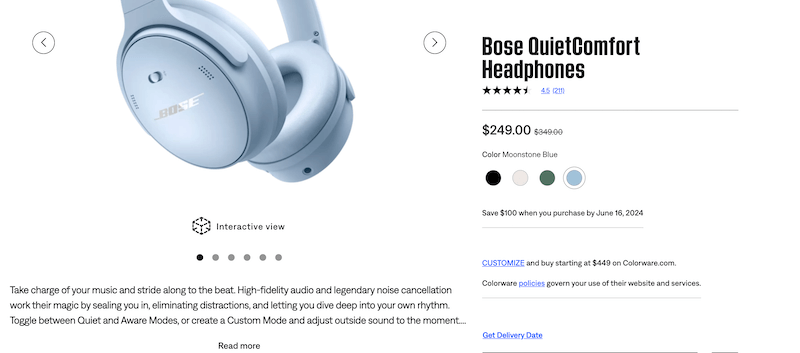
Checklist for Ecommerce product descriptions:
- Keep it simple and easy: Too many buttons, too much text, discounts, pop-ups can be annoying and disturb the user and ultimately lead to abandonment. Do not overwhelm the users.
- Keep it unique: If you have products with different variables that have their own landing page, you might end up having duplicate content. Make sure to write unique product description to all variable or setup canonicals on the duplicated pages.
- Highlight important content: What can the visitor use the product for? How can they use it? What is the specific advantages of that product vs. similar products? Does it have any special attributes worth mentioning like t-shirts of non-stain material? Is anything included or even more important what is not included? Is it compatible with other things?
- List a few important specifications: Make sure that the user knows what they are buying by listing product attributes, size, color, weight, length, max weight or other important things.
Add a “You might also like”-snippet
You are not supposed to stuff anything down in your visitors throat. What you do want is to help your visitors buying.
Including related products is a smart and simple way to retain users that are not really ready to by the product they are currently checking out. Presenting the for good alternatives is a way of helping them find the right product and buy now instead of taking the risk of letting them go to another shop.
On top of that, it’s also a good way of upselling more products to the customer by showcasing matching products as the example from Bose below that is upselling accessories for their headphones.
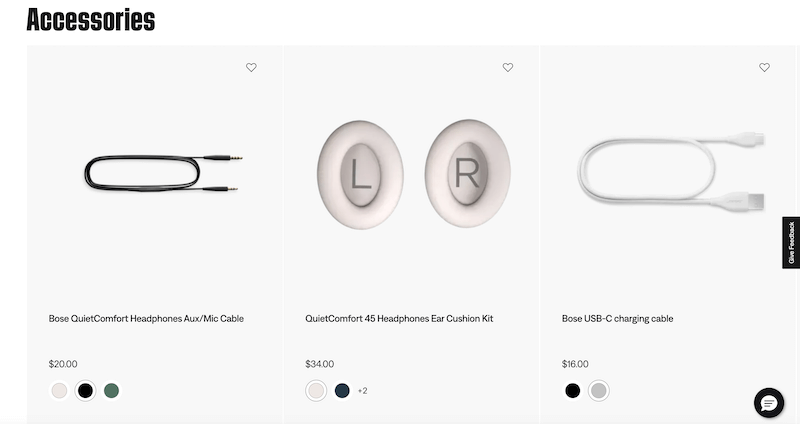
Showing related products is also a boosting factor in terms of your SEO as you’ll add internal links to other products and improve their SEO performance.
To grab the full potential you can add both a “related products” slider and an “others also bought” slider.
Add video demonstrations and guides
One of the most underrated features on product pages is the use of videos. Creating cool videos requires a little bit of effort, hence a lot of Ecommerce businesses isn’t doing it. This is one of the things you can really take advantage of by prioritizing the task.
Videos contributes to conversions, creates trust and increases rankings. User signals is a part of Googles algorithm and to start a video the user actively has to interact with the page which is sending positive signals to Google.
Do yourself a favor and make video creating a standard for new products – and no, it doesn’t have to be a top professional video with expensive equipment and a studio. Create a little video corner with a chair, a desk and some decorations in the background and simply use your smartphone and a cheap click-on microphone.
What to showcase in a product video:
- Get into details about the product and talk features, material, etc.
- Record guides to the product. If it’s a tent, show how easy it is to assemble in 60 seconds for example
- Show the unboxing: What’s in the package? What’s included?
The most important part is that you create a useful and engaging video with content that the user actually needs to know – which depends on the type of products.
Add real product reviews
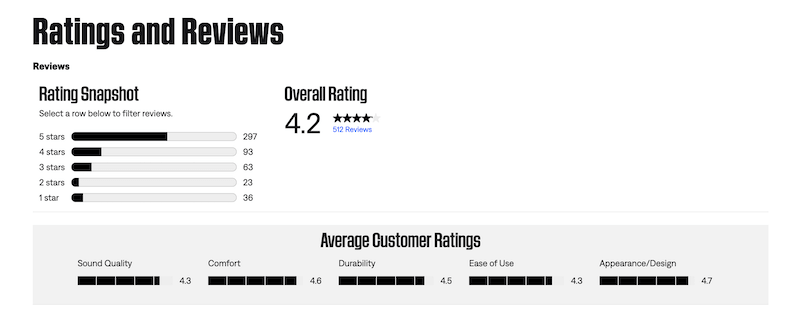
Customer reviews and ratings play a crucial role in establishing trust. Displaying favorable reviews and high ratings on your product page can significantly boost the chances of customers deciding to make a purchase.
In addition to highlighting positive feedback, it is equally important to address any negative reviews in a professional and courteous manner. Responding thoughtfully to criticism demonstrates that you value your customers’ opinions and are committed to improving their experience.
By engaging with dissatisfied customers and resolving their issues, you not only build trust but also showcase your dedication to customer satisfaction.
Moreover, actively encouraging customers to leave reviews can further boost your credibility. Implementing follow-up emails or incentives for reviews can increase the number of responses you receive, giving potential buyers a comprehensive view of your product’s performance.
Remember, a well-rounded collection of reviews, both positive and negative, can paint an honest picture of your brand, making it more relatable and trustworthy.
Overall, customer reviews and ratings are not just a metric of performance but a vital component of your brand’s reputation. By effectively managing and leveraging this feedback, you can foster a loyal customer base and drive more sales.
Lastly, this will probably save yourself from product returns. It’s important to create an open community and let users know about other users experience of certain products. If the product is actually bad the customer will most likely return it anyway.
These honest reviews also gives you the customers actual experience of a product that you might need to remove from stock or talk to the manufacturer about the product quality or features that doesn’t match what users expect of it.
Add product schema
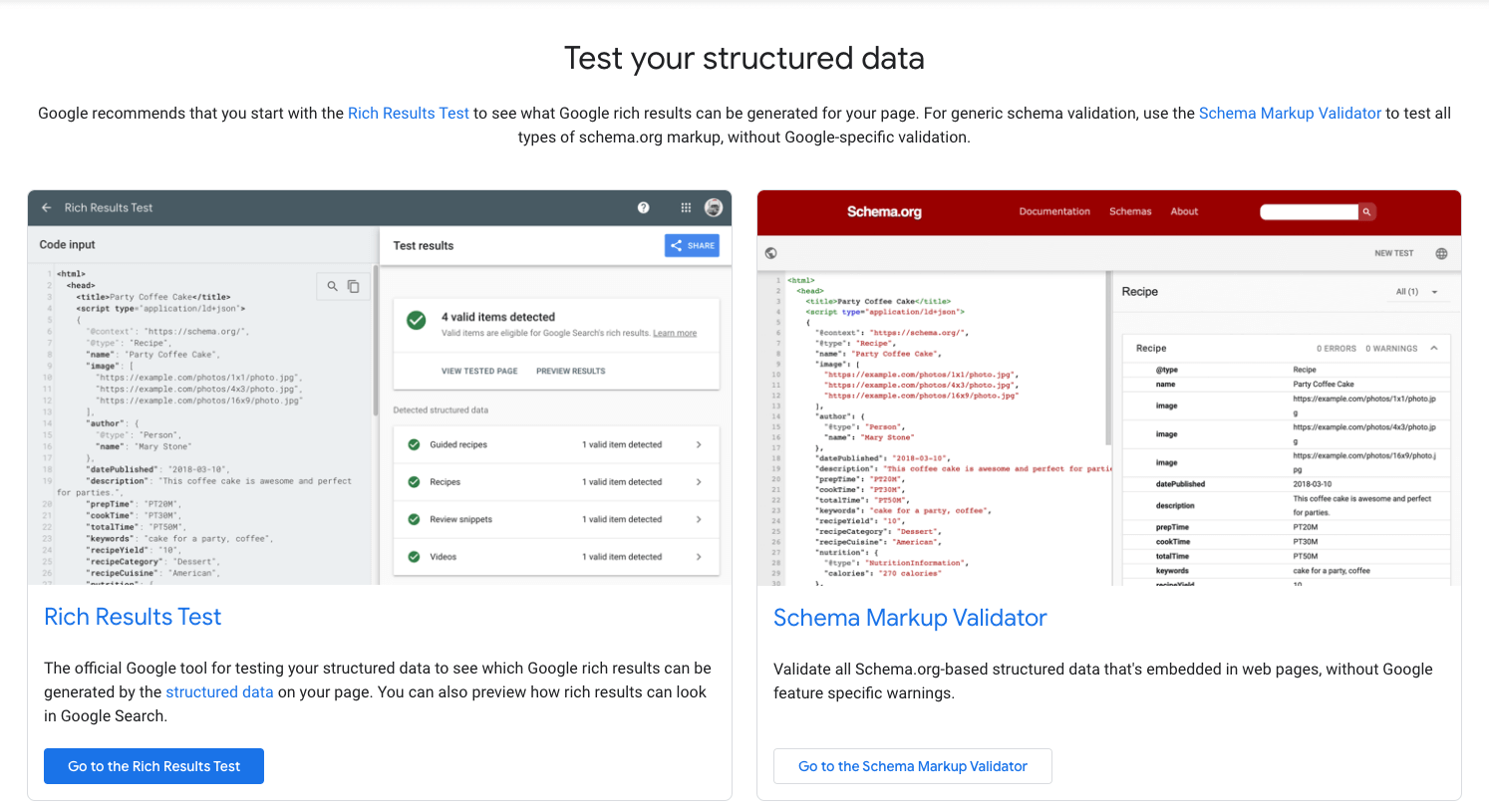
Enhancing your product pages SEO with schema boost the rankings in SERP, can improve you click through rate and visibility in search.
For product schema you want to add product name, price, stock, condition and possibly other important features.
Schema is not a direct ranking feature but adding it can definitely improve your rankings indirectly anyway as for the following statement from Google’s Gary Ilyes:
It will help us understand your pages better, and indirectly, it leads to better ranks in some sense, because we can rank easier.
Adding structured date for your products increases your chances of gaining more visibility in SERPs by getting rich snippets which is highlighting your products. Adding customer reviews to the product schema will also possibly display the review rating directly in search and improve your traffic.
Include FAQs and schema
FAQs is one of the best ways to add additional content to rank for, create more context and authority around the subject and not at least provide additional information about the products from a users perspective.
Depending on what you are selling it can be as simple as “what’s included” and answer what exactly is included when buying the product. A good example is to provide info about whether batteries are included when buying a flashlight, if screws are included when buying a shelf, etc.
An FAQ removes potential doubts from the user that could prevent them from finalizing the purchase. See it as your 24/7 available service assistant answering all potential question a user would ask in a physical store.
Furthermore FAQs are a great way of adding more internal links, increasing user experience and trust, making room for more keywords and of course answering the customers question.
Make sure to add the FAQ schema for you FAQs to help Google understand your content and increase the chance of getting features snippets in SERP and take more space in search.
Canonicalize products that are in multiple categories
It’s crucial to manage product variants correct to avoid index issues regarding duplicate content.
First, your product pages should in general be self-referring with the canonical tag. There is exceptions to this though.
If you have variants of the same product that has its own landing page, it could be variants of color, size, etc.
One of the issues with product variants having its own landing page and are self-referring is that you would have 2 identical pages, containing identical content which will affect the rankings negatively on both products instead of consolidating the products to have one strong landing page.
You can indeed create unique product variants. To do so it’s important to:
- Use URL parameters such as /product?color=black, /product?color=white to clarify the site structure for users as well as search engines
- Use canonical tags. Choose one of the variants to be the main product and refer to that with canonical from all other product variants
You should carefully consider if it even makes sense to have different URLs for product variants. You shouldn’t use separate URLs if:
- Users search behaviour isn’t targeted specific variants of the product
- You don’t want to have the variants on your category pages
- If there is no gains in Google Shopping from having multiple variants instead of one landing page with optional color/size picker
9 things NOT to do on your product page
Hopefully, you are doing all the “do’s” from above to optimize your products pages. Now, let’s look at the don’ts for Ecommerce products:
- Don’t use content from the manufacturer
- Don’t duplicate content by using the same content for multiple products (unless you add correct canonical)
- Don’t use low quality images
- Don’t forget CTAs (call-to-action)
- Don’t use stock images
- Don’t provide false information or leave out important things
- Don’t forget to optimize for mobile users. Most Ecommerce purchases happens from mobile devices
- Don’t forget about your audience. Google doesn’t buy anything from you – focus on users.
- Don’t use too much time on niche and low volume keywords (use energy on your category page instead)
FAQ for product page SEO
Can I automate my SEO product content production with AI?
Basically, yes. You can automate the content creating using AI and add new products with all textual content within minutes. It’s not recommendable to outsource all content work to AI though. You need content made for people by people. Product pages are in the end about selling the product, so you need to use the psychological selling points, know the product, its key features, etc. You can use AI tools but use it for inspiration, rephrasing, idea generating and outlines but write your own quality content.
How to handle out of stock products for SEO?
Having out of stock products is a matter of both user experience and SEO. You need to have a strategy to handle product pages that is out of stock.
If the product is temporarily out of stock you should keep the product page live and put on an “out of stock” button instead of a buy button and let people signup to get a notification when it’s back in stock and recommend them a similar product in stock in the meantime.
If the product is permanently discontinued you can keep the page live if the search demand is high but make sure to be clear about the product status and show them similar product options. If the search demand is low you should redirect the page to another relevant page (most likely the category page.
Round up
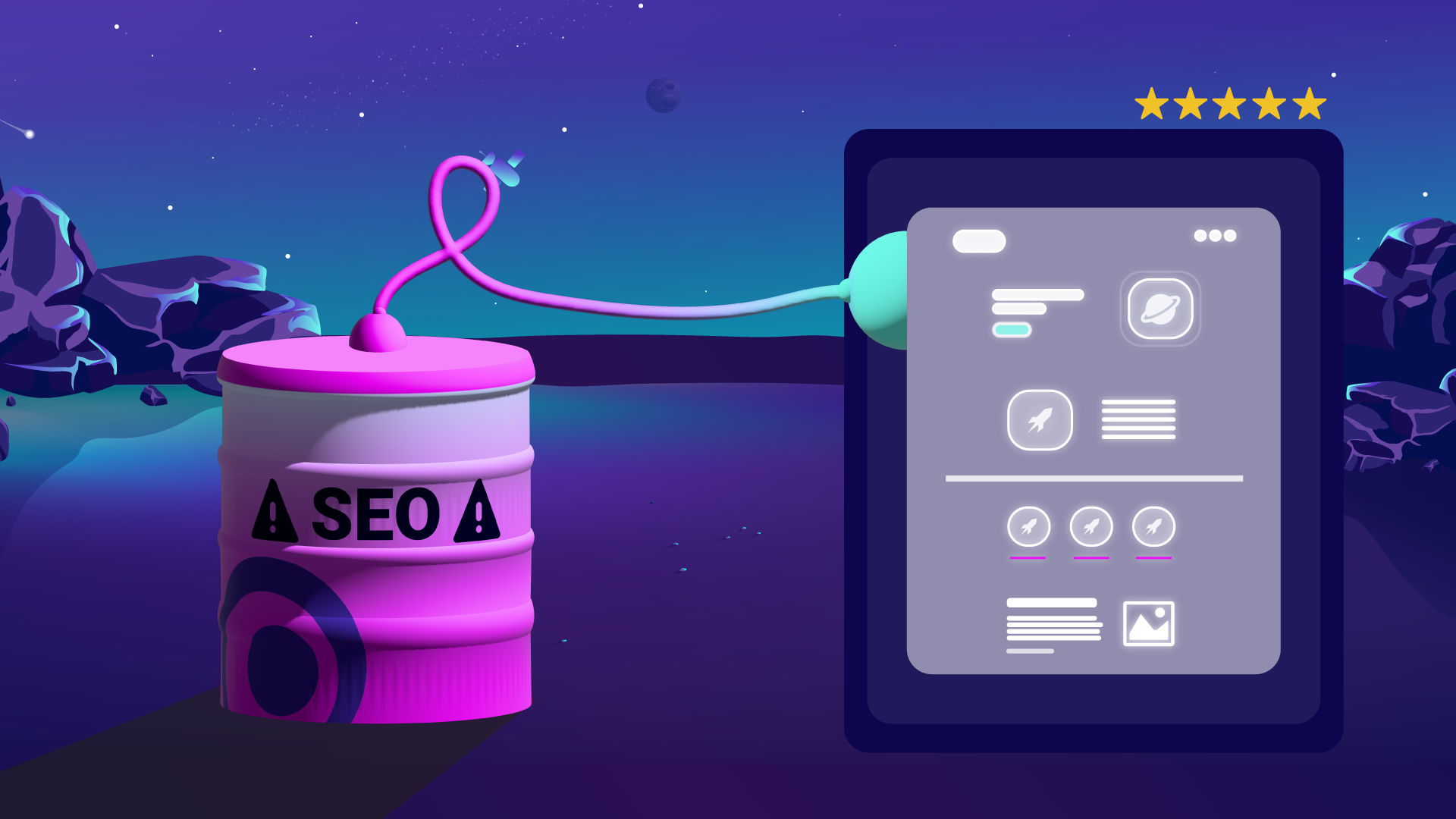
In conclusion, mastering product page SEO for Ecommerce can be a game-changer for your online store. By following the strategies outlined in this guide, you can enhance your product pages’ visibility and drive more traffic and ultimately conversions.
Start with clear and descriptive URLs and integrate breadcrumbs to improve navigation. Ensure your product names align with titles and H1 tags to maintain consistency and relevancy. Populate your pages with relevant content and detailed product attributes to provide value to your customers.
Optimizing product images and crafting compelling product descriptions will make your products more appealing, while features like “You might also like” snippets and video demonstrations can increase engagement.
Including real product reviews and using product schema will build trust and improve your search engine rankings. FAQs and schema markup further enhance the user experience and SEO.
Additionally, canonicalizing products in multiple categories can prevent duplicate content issues. Avoid common mistakes such as overloading your page with keywords or neglecting mobile optimization.
By implementing these best practices and avoiding pitfalls, you can create product pages that not only rank well in search engines but also provide a seamless and informative shopping experience for your customers.

